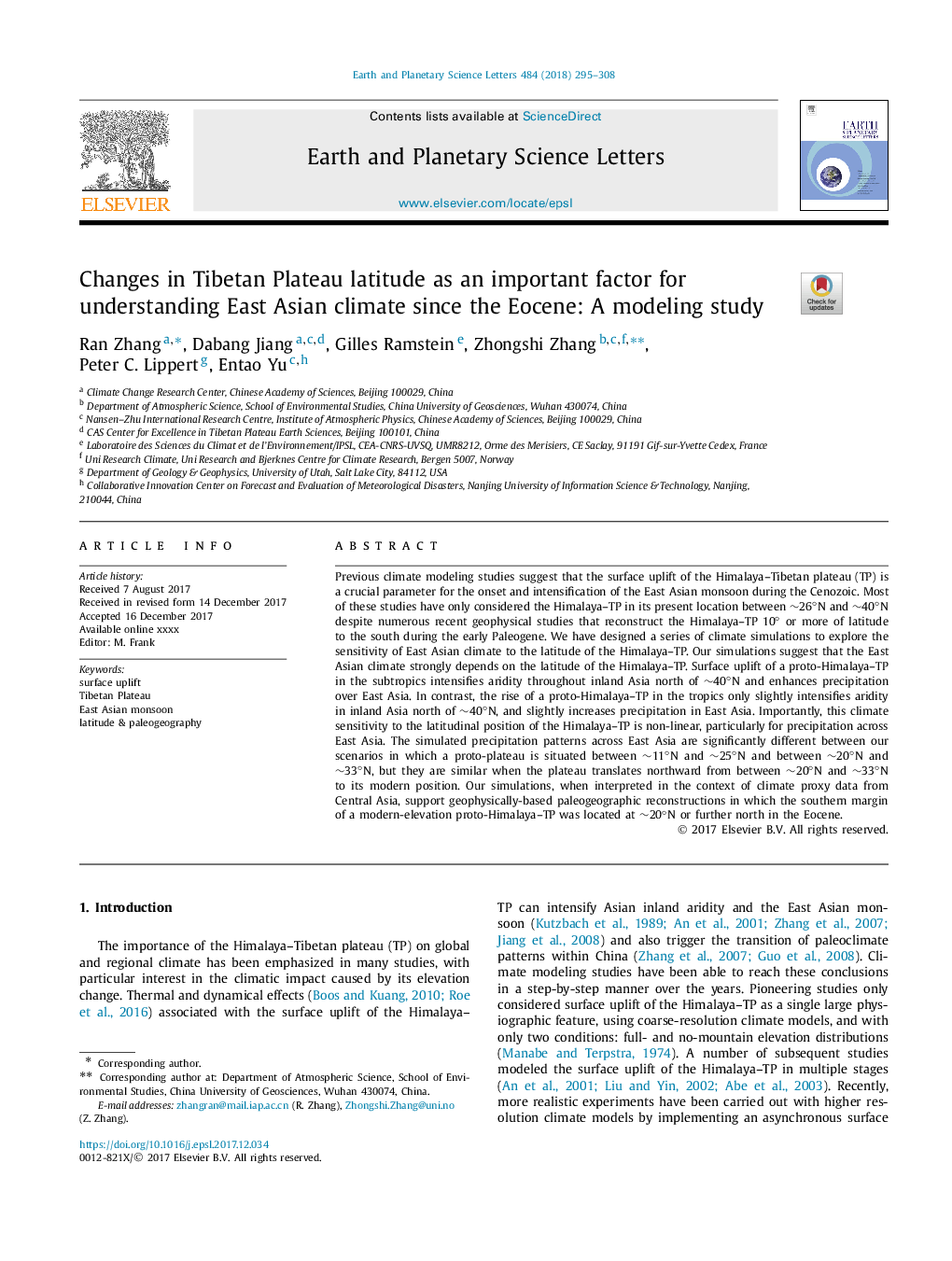| کد مقاله | کد نشریه | سال انتشار | مقاله انگلیسی | نسخه تمام متن |
|---|---|---|---|---|
| 8907169 | 1634672 | 2018 | 14 صفحه PDF | دانلود رایگان |
عنوان انگلیسی مقاله ISI
Changes in Tibetan Plateau latitude as an important factor for understanding East Asian climate since the Eocene: A modeling study
ترجمه فارسی عنوان
تغییرات عرض جغرافیایی تبتانه به عنوان یک عامل مهم برای درک آب و هوای شرق آسیا از زمان ائوسن: یک مطالعه مدلسازی
دانلود مقاله + سفارش ترجمه
دانلود مقاله ISI انگلیسی
رایگان برای ایرانیان
کلمات کلیدی
بالا بردن سطح، تبت پلاتو، موزون شرق آسیا، طول و عرض جغرافیایی،
موضوعات مرتبط
مهندسی و علوم پایه
علوم زمین و سیارات
علوم زمین و سیاره ای (عمومی)
چکیده انگلیسی
Previous climate modeling studies suggest that the surface uplift of the Himalaya-Tibetan plateau (TP) is a crucial parameter for the onset and intensification of the East Asian monsoon during the Cenozoic. Most of these studies have only considered the Himalaya-TP in its present location between â¼26°N and â¼40°N despite numerous recent geophysical studies that reconstruct the Himalaya-TP 10° or more of latitude to the south during the early Paleogene. We have designed a series of climate simulations to explore the sensitivity of East Asian climate to the latitude of the Himalaya-TP. Our simulations suggest that the East Asian climate strongly depends on the latitude of the Himalaya-TP. Surface uplift of a proto-Himalaya-TP in the subtropics intensifies aridity throughout inland Asia north of â¼40°N and enhances precipitation over East Asia. In contrast, the rise of a proto-Himalaya-TP in the tropics only slightly intensifies aridity in inland Asia north of â¼40°N, and slightly increases precipitation in East Asia. Importantly, this climate sensitivity to the latitudinal position of the Himalaya-TP is non-linear, particularly for precipitation across East Asia. The simulated precipitation patterns across East Asia are significantly different between our scenarios in which a proto-plateau is situated between â¼11°N and â¼25°N and between â¼20°N and â¼33°N, but they are similar when the plateau translates northward from between â¼20°N and â¼33°N to its modern position. Our simulations, when interpreted in the context of climate proxy data from Central Asia, support geophysically-based paleogeographic reconstructions in which the southern margin of a modern-elevation proto-Himalaya-TP was located at â¼20°N or further north in the Eocene.
ناشر
Database: Elsevier - ScienceDirect (ساینس دایرکت)
Journal: Earth and Planetary Science Letters - Volume 484, 15 February 2018, Pages 295-308
Journal: Earth and Planetary Science Letters - Volume 484, 15 February 2018, Pages 295-308
نویسندگان
Ran Zhang, Dabang Jiang, Gilles Ramstein, Zhongshi Zhang, Peter C. Lippert, Entao Yu,
